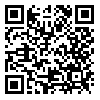BibTeX | RIS | EndNote | Medlars | ProCite | Reference Manager | RefWorks
Send citation to:
URL: http://jdisabilstud.org/article-1-804-en.html
2- Department of Speech Therapy, School of Rehabilitation, Tehran University of Medical Sciences
Background and Objectives: Reading skills play an important role in educational activities and appropriate employment. Various studies show that hearing impaired- children encounter difficulties in reading. Reading ability has been associated with children’s quality of phonological representations ability. The reading problems are due to lack of auditory input in hearing-impaired children. Use of sensory aids including cochlear implant and hearing aid improve the quality of the children's phonological representations. The aim of this study was to examine the effect of sensory aids including cochlear implant and hearing aid on the children's reading ability.
Methods: This analytic study was performed as a Case-control research. The sample size was 63 Persian first grades students (21 cochlear implant, 21 hearing aids and 21 children with normal hearing) in Tehran-Iran. The assessment tool was ten subtests of Nama Test. The subtests are word reading, chain word, rhyme, picture naming, text comprehension, word comprehension, phoneme deletion, nonword reading, letter fluency and category fluency. Inclusion criteria for children with hearing impairment includes: severe-profound congenital bilateral sensorineural hearing loss, experience of using sensory aids for at least 3 years, studying in the first grade of primary school, no history of rejection, use of Persian language as the language of communication, lack of any structural problems and lack of clear speech and motor disabilities. Children with cochlear implants and hearing aids user chronological age ranged from 7 to 7 years and 11 months and 8 to 8 years and 11 months, respectively. Inclusion criteria for children with normal hearing include chronological age 7 to 7 years and 11 months, studying in the first grade of primary school, no history of rejection, to have normal hearing and no history of impairment in hearing, speech and language and learning.
Results: Scores of means in children with normal hearing in reading were significantly greater than children were with severe-to-profound hearing loss with cochlear implants and hearing aids user (p<0.01). Nevertheless, there were not significant differences between two groups of cochlear implant and hearing aid children in means scores of reading.
Conclusion: This research was carried out to examine effectiveness of sensory aids including cochlear implant and hearing aid on the children's reading ability. The findings of the research did not indicate and prove difference in reading performance between children with hearing loss, who have had cochlear implants and those who used hearing aids user, which indicates that cochlear implantation was not significantly greater effective than hearing aid for improvement of reading abilities. Although use of sensory aids including cochlear implant and hearing aid improves the ability to read and academic success, many hearing-impaired children continue to find literacy challenging, and it appears that many will require specialist support throughout their time at school.
| Rights and permissions | |
 |
This work is licensed under a Creative Commons Attribution-NonCommercial 4.0 International License. |




